Description
The previous set of basic radiation protection recommendations produced by NCRP was Report No. 116, Radiation Protection Guidance for the United States (1993). Since 1993, substantial advances in radiation effects knowledge, as well as radiation protection understanding and culture, have occurred.
New knowledge has been obtained on radiation effects at doses lower than apparent in 1993. A review of recent radiation epidemiologic studies by NCRP Scientific Committee SC 1-25 will address dose-response models in general, including threshold models, and their applicability to radiation protection guidance. The results of the SC 1-25 effort will be reflected in the Council Committee 1 (CC 1) report.
Noncancer effects such as cardiovascular disease and cataracts are emerging as potentially important concerns. NCRP Scientific Committee SC 1-23 will evaluate recent studies on the radiation dose response for the development of cataracts, also considering the type and severity of the cataracts as well as the dose rate, and; provide guidance on whether existing dose limits to the lens of the eye should be changed in the United States. The results of the SC 1-23 effort will be reflected in the CC 1 report.
In NCRP Report No. 116, discussion of ethical foundations had not been introduced, the medical use of radiation had not been explicitly addressed, and the severity of health outcomes had not been addressed in a context of radiation protection. Key events such as the Fukushima nuclear reactor accident and the ever-rising increase in population exposure to medical use of radiation [e.g., computed tomography examinations, positron emission tomography scans, nuclear medicine procedures] have increased awareness of the importance of radiation protection guidance in the United States.
In 2007, the International Commission on Radiological Protection (ICRP) published an update of their recommendations (Publication 103). Subsequently an ICRP report on tissue reactions (previously called deterministic effects) and noncancer effects was published in 2013 (Publication 118). While the overall goals for radiation protection in the United States are the same as those for the international community, there are some differences in the specific approaches taken to obtain these goals [i.e., in implementing the three pillars of radiation protection of justification, optimization (the as low as reasonably achievable principle), and dose limitation].
The CC 1 Report will point out where there is consistency between current U.S. and international radiation protection guidance and where there are other points of view for issues where the NCRP guidance is different for the United States and the rationale for such differences.
Unique aspects of the manner in which CC 1 will operate include:
- The first Committee formed under the direct oversight of the Council.
- All NCRP Program Area Committees (PACs) will participate in the development and review of the recommendations.
- The 2015 NCRP Annual Meeting was on the topic “Changing Regulations and Radiation Guidance: What Does the Future Hold?” and addressed the rulemaking activities ongoing within U.S. agencies for which the CC 1 guidance should prove useful.
- An extensive effort will be made to consult with and present to numerous national and international stakeholder groups during both the development and review phases of the CC 1 work.
Goal
Write a report to update and expand the basic radiation protection recommendations of NCRP Report No. 116, Radiation Protection Guidance for the United States (1993), applicable to current needs in the United States.
2016 Accomplishments
- January 26-27, 2016: Co-Chairs and Staff Consultant met to prepare full draft
- January 30, 2016: Full draft to members for review and assigned actions
- March 31, 2016: Preliminary draft (dated March 30) distributed to PACs for review and shared with an ICRP Task Group
- April 10, 2016: Engaged the PACs for initial feedback at the Annual Meeting
- April 28, 2016: Presentation slides distributed to all members for use at upcoming stakeholder meetings
- Second quarter 2016: Presentations at stakeholder meetings IRPA: May 9-13 (Capetown)
- September 7-8, 2016: Sixth meeting of the full committee Reviewed current draft (dated September 2) following comments from all PACs, stakeholder meetings, and ICRP Task Group<
ICRP: May 15-17 (Capetown)
CRCPD: May 18 (Lexington, Kentucky)
UNSCEAR: June 27-July 1 (Vienna)
Reached consensus of several overarching issues
Reached consensus on disposition and rework of each section
Decided schedule of next steps (see Scheduled Activities)
Prior Accomplishments
- April 1, 2014 (teleconference): Initial discussions with members on updating Report No. 116
- May 5, 2014 (teleconference): CC 1 Chairs and PAC Chairs discuss PAC involvement
- July 14, 2014 (opportunistic meeting): Available members at Health Physics meeting
- September 3-4, 2014: First meeting of full committee PAC Chairs designated as Advisors to CC 1
- December 9-10, 2014: Second meeting of full committee Made plan to interact with PACs at Annual Meeting (March 15) on draft outline
- April 1-2, 2015: Third meeting of full committee Preliminary texts discussed; revised outline and updated member assignments
- June 30, 2015 (teleconference): Review progress on drafting assignments
- August 26-27, 2015: Fourth meeting of full committee Review of consolidated input (dated August 22); updated assignments
- December 14-15, 2015: Fifth meeting of full committee Review (section by section) consolidated input (dated November 30)
Scheduled Activities
- January 30, 2017: Redrafted sections due
- February 15, 2017: Distribute next draft to CC 1 and PAC 7
- March 15, 2017: Any further CC 1 and PAC 7 input due
- March 30, 2017: Updated draft to CC 1 members
- April 4-5, 2017: Next CC 1 meeting (1.5 d) (at NCRP)
Support
Membership
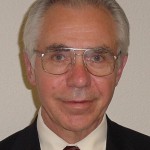
KENNETH R. KASE is Vice President Emeritus of NCRP. He was a member of the Council for 24 y, served as Senior Vice President for 9 y, and for 12 y as Scientific Vice President and Chair of Scientific Committee 46 for Operational Radiation Safety. He also was a member of Committee 4 of the International Commission on Radiation Protection from 1997 to 2001. Dr. Kase completed his term as President of the International Radiation Protection Association (IRPA) in May 2012. He served as Vice-President from 2004 to 2008, and chaired the International Congress Program Committee for the 2000 International Congress on Radiation Protection (IRPA 10) in Hiroshima, Japan. Kenneth Kase began his career in Health Physics at Lawrence Livermore National Laboratory, California, in 1963 and moved to Stanford Linear Accelerator Center (SLAC) in 1969. In 1975 he received a PhD from Stanford University and was appointed to the faculty of Radiation Oncology at the Harvard Medical School. He was appointed Professor of Radiation Oncology at the University of Massachusetts Medical School in 1985. In 1992 he returned to Stanford and was appointed Associate Director of SLAC and Director of the Environment, Safety and Health Division in 1995. He retired from that post in 2001 and from SLAC in 2005. He joined StemRad, Ltd., a provider of personal radiation protection solutions, in 2012 as a scientific advisor and is currently a member of their Advisory Board. Throughout his career Dr. Kase has been active in research activities related to radiation physics and radiation protection, particularly in radiation measurements and the operation of particle accelerators. He has published over 75 papers in peer reviewed journals, co-authored one book, and edited three others on radiation dosimetry. Dr. Kase served on the Board of Directors of the Health Physics Society (HPS) from 1989 to1992 and 2002 to 2005 and as President of the HPS in 2003 to 2004. He served on the Board of Directors of the American Association of Physicists in Medicine (AAPM) from 1984 to 1991, and as AAPM Treasurer from 1986 to 1991. Dr. Kase also has been an associate editor of Health Physics, Medical Physics, and Radiation Research. |
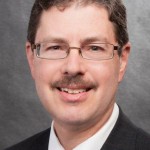
DONALD A. COOL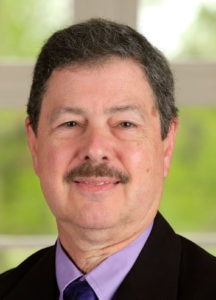
is currently the Vice Chair of the International Commission on Radiological Protection, and previously served ICRP in the Main Commission and on Committee 4, Practical Application of the Commission’s Recommendations. Dr. Cool is a Council Member of NCRP, is a member of PAC 7, and was Co-Chair of NCRP Council Committee 1. He is a Fellow of the Health Physics Society. Dr. Cool has served radiological protection for more than 40 y. He received his Doctorate degree in Radiation Biology from the University of Rochester School of Medicine and Dentistry. At the end of 2021, he retired after more than 7 y as the Technical Executive for Radiation Safety at the Electric Power Research Institute (EPRI), where he advised on EPRI’s Low Dose Radiation research and various aspects of the EPRI the Radiation Safety Program. Before joining EPRI, Dr. Cool served with the U.S. Nuclear Regulatory Commission (NRC) for more than 32 y in a number of positions, including as Senior Advisor for Radiation Safety and International Liaison and several roles as a Senior Executive. At NRC, he was responsible for coordinating the wide range of national and international activities related to radiation protection, safety, and security of byproduct materials; decommissioning and waste management; radiation protection policy; and international radiation protection recommendations and standards. |
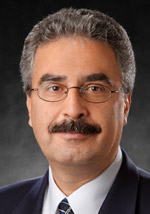
ARMIN ANSARI is the Radiological Assessment Team Lead at the Centers for Disease Control and Prevention (CDC) serving as subject matter expert in CDC’s radiation emergency preparedness and response activities. He received his BS and PhD degrees in radiation biophysics from the University of Kansas, starting his career as a radiation biologist, and did his postdoctoral research in radiation-induced mutagenesis at Oak Ridge and Los Alamos National Laboratories. He was a senior scientist with the radiological consulting firm of Auxier & Associates before joining CDC in 2002. He has led the development of key national guidance documents including guides for population monitoring and operation of public shelters after radiation emergencies and a number of training products for public health professionals. He is a past president of the Health Physics Society, adjunct associate professor of nuclear and radiological engineering at Georgia Institute of Technology, member of Georgia East Metro Medical Reserve Corps and Gwinnett County Community Emergency Response Team, and provides consultancy to the International Atomic Energy Agency. Since 2014, he has served as member of the U.S. delegation to the United Nations Scientific Committee on the Effects of Atomic Radiation. He is the author of Radiation Threats and Your Safety: A Guide to Preparation and Response for Professionals and Community, a book specifically directed at audiences without radiation protection expertise. |
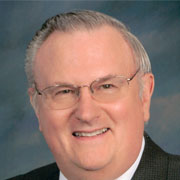
JOHN D. BOICE, JR.
is Professor of Epidemiology at Vanderbilt University School of Medicine. He is Past President of NCRP (2012 to 2018) and currently the Director of Science. After being awarded Doctor of Science in Epidemiology from Harvard University Dr. Boice went on to join the world-renowned National Cancer Institute (NCI) where he developed, and then in 1984 became the first chief of, the Radiation Epidemiology Branch. He remained in the U.S. Public Health Service (USPHS) for 27 y retiring as Captain. From 1997 to 2017, he was a member of the Main Commission of the International Commission on Radiological Protection, and for 25 y from 1993, a member of the U.S. delegation to the United Nations Scientific Committee on the Effects of Atomic Radiation. Dr. Boice has made substantial and significant contributions to our understanding of the risks posed by exposure to radiation, with over 550 publications in the scientific literature, many of them providing key elements for the scientific basis of radiological protection. He has been invited to deliver many distinguished lectures, including the Lauriston Taylor Lecture of the NCRP and the Sievert Lecture of the International Radiation Protection Association. His awards include the Harvard School of Public Health Alumni Award of Merit, the EO Lawrence Award from the U.S. Department of Energy, the Gorgas Medal from the Association of Military Surgeons of the United States, the outstanding alumnus award from the University of Texas at El Paso, the Distinguished Service Medal from the USPHS, the NCI Director's Award in 2021, and recently he was elected Honorary Fellow of the U.K. Society for Radiological Protection in 2022. The "John D Boice Jr Young Investigator Award" was established by NCRP in 2019 to recognize early career professionals. He currently serves on the Steering Committees for the Image Gently Alliance and for the Childhood Cancer Survivor Study (St. Jude). Dr. Boice has worked tirelessly to direct and advance the U.S. Million Person Study of nuclear workers and atomic test veterans, which will add significantly to our knowledge of the effects of prolonged exposure to low levels of radiation. |
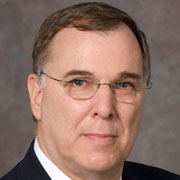
JERROLD T. BUSHBERG
is a Clinical Professor of Radiology and Clinical Professor of Radiation Oncology at the University of California (UC) Davis School of Medicine. He holds the title of Director Emeritus Medical/Health Physics Programs and retired as Associate Chair of the Department of Radiology in 2018. He is currently Chair of the Board of Directors and Senior Vice President of NCRP. He is an expert on the biological effects, safety and interactions of ionizing and nonionizing radiation and holds multiple radiation detection technology patents. With over 40 y of experience, he has served as a subject matter expert and an advisor to government agencies and institutions throughout the nation and around the world, including the U.S. Department of Homeland Security, the U.S. Food and Drug Administration’s Center for Devices and Radiological Health, the World Health Organization, and the International Atomic Energy Agency in the areas of ionizing and nonionizing radiation protection, risk communication, medical physics, and radiological emergency medical management. In 2016, Dr. Bushberg was appointed Vice Chair of the Committee on Man and Radiation, which is a Technical Committee of the Institute of Electrical and Electronics Engineers Engineering (IEEE) in Medicine and Biology Society. In addition, he is an elected member of the IEEE International Committee on Electromagnetic Safety and was recently appointed by the U.S. Health Physics Society as its representative to the International Radiation Protection Organization Committee on Non-ionizing Radiation Safety. Former Commander in the U.S. Naval Reserve, among other assignments, CDR Bushberg served as Executive Officer of the Chemical/Biological/Nuclear Technical Unit 120 Pacific, a highly skilled multidisciplinary military emergency response and advisory team based out of the Alameda Naval Air Station in California. Dr. Bushberg is an elected fellow of the American Association of Physicists in Medicine and the Health Physics Society. He is certified by several national professional boards with specific subspecialty certification in radiation protection and medical physics and served as a Director and Vice Chair of the American Board of Medical Physics from 2018 to 2022. In 2014, Dr. Bushberg was awarded the NCRP Warren K. Sinclair Medal for Excellence in Radiation Science and received the Professor John C. Christiansen Distinguished Alumnus award from Purdue University School of Health Sciences in 2016. Prior to coming to the UC Davis Health System as technical director of Nuclear Medicine, Dr. Bushberg was on the faculty of Yale University School of Medicine Department of Radiology, where his research focused on radiopharmaceutical development. Dr. Bushberg has had responsibility for postgraduate medical education in medical physics, radiation (ionizing and nonionizing) biology, and protection for more than 30 y. The fourth edition of the textbook, The Essential Physics of Medical Imaging, authored by Bushberg, Seibert, Leidholdt, and Boone, is used extensively in radiology residency programs throughout the United States. |

LAWRENCE T. DAUER
is an Attending Physicist in the Departments of Medical Physics and Radiology at Memorial Sloan Kettering Cancer Center and serves at their Corporate Radiation Safety Officer. He serves as a member of the Nuclear and Radiation Studies Board of the National Academy of Sciences, Engineering and Medicine. He is a former Board member and current Council member of NCRP and is the Scientific Director of the Million Person Study. He has served as Chair or Co-Chair on several NCRP scientific committees associated with radiation protection of workers, patients, and members of the public. He served 7 y on the International Commission on Radiological Protection Committee 3, Radiation Protection in Medicine. |
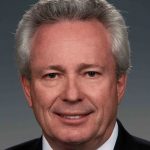 Darrell R. Fisher Darrell R. Fisher |

PATRICIA A. FLEMING is Professor Emerita in Philosophy at Saint Mary’s College, Notre Dame having retired as its Provost. She resides in Logandale, Nevada, one of the areas which experienced fallout from the above ground nuclear testing in the 1950s. She received her master’s and doctorate from Washington University in St. Louis, Missouri. While there, she served as the assistant editor of the Philosophy of Science Journal. She has also served as a consultant to the Organization for Economic Co-operation and Development/Nuclear Energy Agency in Paris, France. Dr. Fleming has published and lectured internationally on the ethical and epistemological issues associated with the disposal of high-level nuclear waste, including the use of expert elicitation methodology in site characterization, waste management and indigenous populations, informed consent in stakeholder populations, and circularity in regulatory policy. Dr. Fleming’s familiarity with ethical concerns regarding the health effects from radiation exposure led to her appointment on the National Academy of Science Committee to Assess the Scientific Information for the Radiation Exposure Screening and Education Program. She served on the Veterans Board on Dose Reconstruction from 2005 to 2013. Her current project is a manuscript on ethics and the wide gamut of nuclear matters. |

Kathryn A. Higley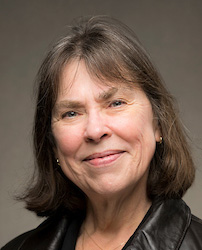
is the Oregon State University (OSU) Distinguished Professor of Nuclear Science and Engineering. She recently served as the Interim Director for the Center for Quantitative Life Sciences at OSU, a genome-enabled and data-driven, high-performance computing research center in the life and environmental sciences. For more than a decade she was Head of the School of Nuclear Science and Engineering. Dr. Higley received her PhD and MS in Radiological Health Sciences from Colorado State University and her BA in Chemistry from Reed College. She has held Reactor Operator and Senior Reactor Operator's licenses and is a former Reactor Supervisor for the Reed College TRIGA reactor. Dr. Higley started her career as a Radioecologist for Portland General Electric. She later worked for the Pacific Northwest National Laboratory as a Senior Research Scientist in environmental health physics. Dr. Higley has been at Oregon State University since 1994, teaching undergraduate and graduate topics on radioecology, dosimetry, radiation protection, radiochemistry, and radiation biology. She previously served as Vice Chair of the International Commission on Radiological Protection's Committee 4 (Application of the Commission's Recommendations). She is a fellow of the Health Physics Society and a Certified Health Physicist. Dr. Higley was first elected to the Council in 2014, appointed to the Board of Directors in 2023, and has been a member of the Budget and Finance Committee since 2022. She was Co-Chair of Council Committee (CC) 2 on Meeting the Needs of the Nation for Radiation Protection and a Member of CC 1, Radiation Protection Guidance for the United States; Program Area Committee 5, Environmental Radiation and Radioactive Waste Issues; SC 46-17, Radiation Protection in Educational Institutions; and SC 64-23, Cesium in the Environment. She was a member of the 2016 Annual Meeting Program Committee on "Meeting the Needs of the Nation for Radiation Protection" and presented "Education or Training: Does it Matter?" the same year. Dr. Higley served on the WARP (Where Are the Radiation Professionals?) Initiative Workshop. At the end of the 2024 Annual Meeting she will become the seventh President of NCRP. Her areas of interest include environmental transport and fate of radionuclides, radioecology, radiochemistry, radiation dose assessment, nuclear emergency response, environmental regulations, and risk communication. |

Randall N. Hyer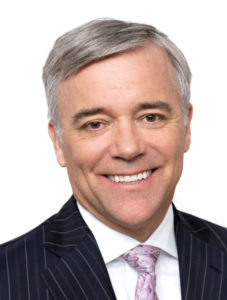
has over three decades’ experience in high-concern, low-trust public communications. He advises the National Academy of Sciences, Engineering and Medicine, lectures at Harvard University, and advises/educates both individuals and organizations on how to implement best practices in risk and crisis communication. His diverse experience covers disease outbreaks, nuclear emergencies, natural disasters, outbreak investigations, product safety concerns, reorganizations and downsizing, budget cuts, rogue employee mitigations, health hazard evaluations, and strategic communications. As the Senior Vice President for Global Medical at Moderna, Dr. Hyer helped develop, communicate, and manage the global rollout of the Moderna COVID-19 mRNA vaccine. In 2017, he was pivotal in engaging the scientific, medical and policy communities to achieve Food and Drug Administration approval of a new adult hepatitis B vaccine (HEPLISAV-B®), the first vaccine using a truly novel adjuvant. Board-certified in general preventive medicine and public health, Dr. Hyer earned his MD from Duke and trained at Walter Reed Hospital and Harvard. He received the PhD from the University of Oxford researching the genetics of juvenile diabetes. His studies won the National Institutes of Health "Outstanding Research Award for Clinical Trainees" and are widely cited. At Oxford University, Dr. Hyer founded the biotechnology company, Alpha-Plus DNA. He also served as a U.S. Congressional Fellow for Senator Pete V. Domenici (R. -NM). Dr. Hyer helped introduce legislation to safeguard genetic privacy that eventually became the Genetic Information Non-discrimination Act (GINA) of 2008. Dr. Hyer graduated with Distinction from the U.S. Naval Academy. Rising to the rank of Commander, his naval service included four major military combat operations in Europe and southwest Asia as well as three major complex humanitarian emergencies with Kosovo relief, Mozambique flood relief, and the Indian Ocean tsunami. Dr. Hyer also served as the Winter-Over Medical Officer at the McMurdo and South Pole Stations, Antarctica as the sole physician. At the World Health Organization (WHO) in Geneva, Dr. Hyer served as a Medical Officer and Military Liaison. Among other duties, he helped facilitated the WHO response to various crisis such as anthrax, Ebola, the 2003 SARS outbreak, tsunamis, earthquakes, and pandemic influenza. Dr. Hyer’s perspectives and contributions span his residing in eight and travelling to 100 plus countries in diverse roles across the public and private sectors. |
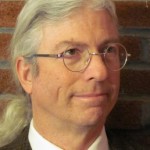
WILLIAM E. IRWIN leads the Radiological and Toxicological Sciences Program at the Vermont Department of Health and is responsible for radiation protection in medicine and other applications, nuclear facility environmental surveillance, preventive radiological/nuclear detection and emergency preparedness. He is a member of NCRP Council Committee 1 which produced Report No. 180, Management of Exposure to Ionizing Radiation: Radiation Protection Guidance for the United States (2018); Program Area Committee 3, Scientific Committee (SC) 3-1 which wrote Report No. 179, Guidance for Emergency Response Dosimetry; and SC 3-1P2 which wrote Commentary No. 27, Implications of Recent Epidemiologic Studies for the Linear-Nonthreshold Model and Radiation Protection, for implementation of Report No. 179. He was on the 2017 NCRP Annual Meeting Program Committee and presented on the gaps filled in emergency response by the Radiological Operations Support Specialist (ROSS). He helped lead the NCRP Special Session on Radioactive Waste Management at the 2018 Health Physics Society (HPS) Mid-Year Meeting and serves on the 2019 NCRP Annual Meeting Program Committee. Dr. Irwin represents the Conference of Radiation Control Program Directors (CRCPD) on the ROSS Steering Committee leading efforts to train and certify hundreds of ROSS to bolster national radiological and nuclear preparedness. He is a ROSS instructor for Counter Terrorism Operations Support and reinforces his responder capabilities as a Chief Officer of the Vermont Hazardous Materials Response Team, and as a Chief Officer and Emergency Medical Technician for the Bakersfield Volunteer Fire Department. He is a Certified Health Physicist, long-time member of HPS and was previously on the American Board of Health Physics Part II Panel of Examiners. He serves the CRCPD in numerous committees, was on its Board of Directors and served as the Board Chair. Prior to government service, Dr. Irwin worked as Laser Safety Officer and Radiation Safety Officer at Harvard University and the Massachusetts Institute of Technology. He is a consultant on radiofrequency radiation (RFR), laser radiation, extremely low frequency electromagnetic fields, nuclear magnetic resonance fields, and ionizing radiations. He volunteers for Interpol in its international efforts to prevent and detect the smuggling of radiological and nuclear materials. Both his Doctor of Science and Master of Science were earned at the University of Massachusetts Lowell with his dissertation on the health effects of wireless telecommunications RFR exposure. Dr. Irwin started in nuclear power, first as a radiation protection technician on U.S. Navy submarines, guided missile cruisers, and aircraft carriers at Newport News Shipbuilding and Dry Dock Company and then as an instructor and supervisor in radiation protection, chemistry, and nuclear power plant systems and operations training at commercial facilities. |
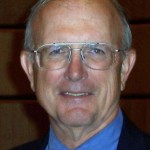
FRED A. METTLER, JR. is currently Professor Emeritus and Clinical Professor at the Department of Radiology at the University of New Mexico School of Medicine. He was chairman of the department for 18 y from 1994 to 2003. He is currently in the Radiology and Nuclear Medicine Service at the New Mexico Federal Regional Medical Center. He graduated with a BA in Mathematics from Columbia University and in 1970 he received his MD from Thomas Jefferson University. He performed a rotating internship at the University of Chicago and subsequently completed a Radiology and Nuclear Medicine Residency at Massachusetts General Hospital. He received an MS in Public Health from Harvard University in 1975. He is a fellow of both the American College of Radiology and the American College of Nuclear Physicians. He is board certified in both radiology and nuclear medicine. Dr. Mettler has authored over 360 scientific publications including 20 textbooks, and holds four patents. The books are on Medical Management of Radiation Accidents, Medical Effects of Ionizing Radiation and Radiology and Nuclear Medicine. He was a Scientific Vice President of NCRP and remains a member. He has chaired several committees for the Institute of Medicine/National Research Council and is a member of the Nuclear and Radiation Studies Board of the National Academies. He is also an academician of the Russian Academy of Medical Sciences. Dr. Mettler has been listed in "The Best Doctors in America" since 1994 as an expert in both nuclear medicine and radiation injury. He has been a certifying examiner for the American Board of Radiology for 30 y. He was the United States Representative to the United Nations Scientific Committee on the Effects of Atomic Radiation 28 y. He is an Emeritus Commissioner of the International Commission on Radiation Protection (ICRP). He was the Health Effects Team Leader of the International Chernobyl Project. He has served as an expert on radiation effects and accidents for the Centers for Disease Control and Prevention, the World Health Organization, the International Atomic Energy Agency, the International Agency on Research on Cancer, and for the Costa Rican, Peruvian, Panamanian, Polish governments. He was a co-author of the NCRP and ICRP reports on radiation protection during radiological terrorism and has been a member of multiple subgroups on radiological terrorism for the U.S. Department of Homeland Security. He is currently a health advisor to the Japanese Cabinet for the Fukushima nuclear disaster. |
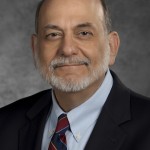
DONALD L. MILLER
Dr. Miller was elected to NCRP in 2006. He currently serves on the Board of Directors and as Chair of Program Area Committee 4 (Radiation Protection in Medicine). He is an author of NCRP Reports Nos. 168, 172, 177, 180, 184, and 185, and Statements Nos. 11 and 13. He served on the International Commission on Radiological Protection (ICRP) Committee 3 (Protection in Medicine) as a member from 2010 to 2013, and as Vice-Chair from 2013 to 2017. He is an author of ICRP Publications 117, 120, 135, and 139. He was Vice-Chair for the U.S. Environmental Protection Administration’s Federal Guidance Report No. 14, is a consultant to the International Atomic Energy Agency, and is a member of the World Health Organization’s Core Group of Experts on radiation protection of patients and staff. Dr. Miller was Professor of Radiology at the Uniformed Services University in Bethesda, Maryland from 1993 to 2012. He has served as Associate Editor of Radiology and the Journal of Vascular and Interventional Radiology and is an author of more than 200 papers in peer-reviewed journals and more than 40 book chapters and reports. He is a Fellow of the Society of Interventional Radiology (SIR) and the American College of Radiology (ACR), and an Honorary Member of both the American Association of Physicists in Medicine and the International Organization for Medical Physics. He chaired SIR’s Safety and Health Committee from 1999 to 2011 and the ACR Guidelines Interventional Committee from 2008 to 2012. His research interests have centered on radiation protection in medicine. |

R. JULIAN PRESTON
is currently a Special Government Employee (Expert) with the Radiation Protection Division of the U.S. Environmental Protection Agency (EPA). He was previously the Associate Director for Health for the National Health and Environmental Effects Research Laboratory of EPA. He also served as Director of the Environmental Carcinogenesis Division at EPA and as senior science adviser at the Chemical Industry Institute of Toxicology. He has been employed at the Biology Division of the Oak Ridge National Laboratory and has served as Associate Director for the Oak Ridge-University of Tennessee Graduate School for Biomedical Sciences. Dr. Preston's research and current activities have focused on the mechanisms of radiation and chemical carcinogenesis and the approaches for incorporating these types of data into cancer risk assessments by integrating epidemiology and radiation biology. Dr. Preston currently serves on NCRP committees and as a member of the National Academy of Sciences (NAS) Nuclear and Radiation Studies Board. He was recently a member of an Office of Science and Technology Policy Committee on Low Dose Radiation Research. He was also recently co-chair of an NAS Committee for a National Aeronautics and Space Administration sponsored project on revising dose limits for astronauts. Dr. Preston was chair of Committee 1 of the International Commission on Radiological Protection (ICRP), a member of the ICRP Main Commission, and the Representative and a member of the U.S. delegation to the United Nations Scientific Committee on the Effects of Atomic Radiation. He served as Chair for the National Research Council's Committee to Assess the Scientific Information for the Radiation Exposure Screening and Education Program and on the Task Group on the Biological Effects of Space Radiation. He is an associate editor of Environmental and Molecular Mutagenesis. Dr. Preston has had more than 250 peer-reviewed papers and chapters published. He received his BA and MA from Peterhouse, Cambridge University, England, ingenetics and his PhD from Reading University, England, in radiation genetics. |
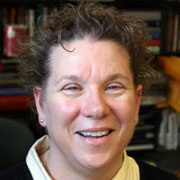
GAYLE E. WOLOSCHAK
is a Professor of Radiation Oncology and Radiology at Northwestern University Feinberg School of Medicine in Chicago and Associate Dean of the Graduate School. She and her group have been involved in studies of molecular consequences of radiation exposure, late tissue effects associated with radiation, and the use of radiation-inducible nanomaterials for cancer imaging and therapy. Dr. Woloschak also teaches radiation biology to radiation oncology and radiology residents, cardiology trainees, and graduate students and manages the Advanced Grant Writing Workshop for the Radiological Society of North America (RSNA). She earned her PhD in medical sciences from the University of Toledo (Ohio) and did post-doctoral studies in molecular biology at the Mayo Clinic. She has served on review panels for various federal agencies including the National Institutes of Health, the National Aeronautics and Space Administration, the U.S. Department of Energy, RSNA, the U.S. Army Medical Research and Materiel Command, and others. She is currently Editor-in-Chief for the International Journal of Radiation Biology, Section Editor for PLOS One, and serves on a variety of editorial boards. She is Chair of NCRP Program Area Committee 1, has served on organizational committees for several NCRP meetings, and has been involved in committees for several NCRP reports. She also served as President of the Radiation Research Society and is a member of the U.S. delegation to the United Nations Scientific Committee on the Effects of Atomic Radiation. |
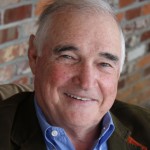
JOHN E. TILL is president Risk Assessment Corporation (RAC) (www.racteam.com). He graduated from the U.S. Naval Academy 1967. He served in the U.S. Navy Nuclear Submarine Program and retired a Rear Admiral in the U.S. Naval Reserve in 1999. As a reserve flag officer he served as Deputy Commander Submarine Force Atlantic Fleet and Deputy Commander US Strategic Command and Commander Naval Reserve Readiness Command Region TEN. He is a recipient of Department of Defense Distinguished Service Medal, the Legion of Merit, two Navy Meritorious Service Medals, two Navy Commendation Medals, and the Navy Achievement Medal. Following his active duty service, Dr. Till received his MS degree from Colorado State University in 1972 and his PhD degree from the Georgia Institute of Technology in 1976. In 1977 he formed RAC. Since its formation RAC has played a key role in our understanding of radioactive materials when they enter the environment and how they affect humans. He has been responsible for major historical dose reconstruction projects at U.S. Department of Energy (DOE) facilities including Hanford, Washington, Fernald, Ohio, Rocky Flats, Colorado, the Savannah River site, and Los Alamos National Laboratory. Working with Vanderbilt University and National Cancer Institute, Dr. Till’s team developed the first in-depth dosimetry from exposures to military personnel who participated in the atmospheric testing of nuclear weapons between 1945 and 1963. Working with epidemiologists, Dr. Till team of researchers is enabling us to better understand if there is a higher incidence of cancer among this group of over 114,000 veterans. In 1995, Dr. Till received the E.O. Lawrence Award from DOE in the field of Environmental Science and Technology. He was selected for this honor for his work in public involvement and research in dose reconstruction. He was presented the L.S. Taylor Medal and presented the Taylor Lecture at the annual meeting of NCRP in 2013. In 2020, he received the Health Physics Society’s Distinguished Scientific Achievement Award. Dr. Till’s scientific achievements include over 200 scientific publications and books that stress new approaches to apply and simplify transport and fate mechanisms in environmental and risk analysis. His most recent book, Radiological Risk Assessment and Environmental Analysis was published by Oxford University Press. He served on the International Commission on Radiological Protection (ICRP) for 12 y and worked with the International Atomic Energy Agency on various regulatory reports. He is a Distinguished Emeritus Member of NCRP and has served on and chaired various committees of the National Academy of Sciences. |
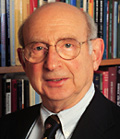
S. JAMES ADELSTEIN is Paul C. Cabot Distinguished Professor of Medical Biophysics (Emeritus). He received his MD degree from Harvard Medical School and his PhD in Biophysics from the Massachusetts Institute of Technology. He did postdoctoral work at Cambridge University and at the Johns Hopkins Hospital. In the 1970s he organized nuclear medical units at Peter Bent Brigham (now Brigham and Women's) Hospital, Children's Hospital of Boston, and Dana-Farber Cancer Institute, which were affiliated to become a teaching, clinical and research organization known as the Joint Program in Nuclear Medicine. Dr. Adelstein served as the Executive Dean for Academic Programs at Harvard Medical School from 1978 to 1997. He is a member of the Institute of Medicine and recipient of the Society of Nuclear Medicine and Molecular Imaging's Hermann Blumgart, Paul Aebersole, and George de Hevesy Awards. His research has focused on the biophysical effects of highly ionizing radiation emitted by radionuclides. Dr. Adelstein was elected to NCRP in 1978, served on several report-writing committees, and was Vice President of NCRP from 1983 to 2002. |
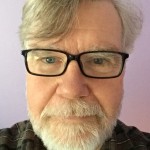
Ralph L. Andersen
|
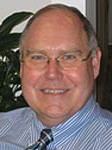
Michael A. Boyd is the Director of the Center for Science and Technology in the U.S. Environmental Protection Agency’s Office of Radiation and Indoor Air/Radiation Protection Division. The Center is responsible for the development of radiation dose and risk assessment guidance and for providing technical support for radiation protection policy issues. Mr. Boyd is also the co-chair of the Federal Guidance Subcommittee of the Interagency Steering Committee on Radiation Standards. He is a member of the NCRP’s PAC 5 and was recently elected to the NCRP Board of Directors. He is a member of the International Commission on Radiological Protection (ICRP) Committee 4 and chairs ICRP Task Group 98 on Application of the Commission’s Recommendations to exposures resulting from contaminated sites from past industrial, military and nuclear activities. Since 2015, he has chaired the Organisation for Economic Cooperation and Development/Nuclear Energy Agency's Committee on Radiological Protection and Public Health. Mr. Boyd is an active member of the Health Physics Society and is a delegate to the International Radiation Protection Association where he is currently a member of its International Congress Program Committee for IRPA 15, which will be held in Seoul, Korea in May 2020. He has a BS in Biology and MS in Public Health from the University of North Carolina at Chapel Hill. |
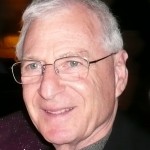
MARVIN ROSENSTEIN is a consultant, currently concentrating on the preparation of scientific reports produced by NCRP in all subject areas. From 1982 to 1995, he was Director, Office of Health Physics at the Center for Devices and Radiological Health, U.S. Food and Drug Administration. He also served in a number of scientific and management positions related to radiation protection during his 33 y career as a Commissioned Officer in the U.S. Public Health Service, from 1962 to 1995. He received a BS in Chemical Engineering (University of Maryland, 1961), an MS in Environmental Engineering (Rensselaer Polytechnic Institute, 1966) and a PhD in Nuclear Engineering (University of Maryland, 1971). His technical work has concentrated on radiation dosimetry, particularly with regard to x rays used for medical diagnosis, epidemiological studies of exposed populations, and public radiation emergencies. He is a Distinguished Emeritus Member of NCRP (after serving as a Council member for 18 y), and an Emeritus member of Committee 3 (Protection in Medicine) of the International Commission on Radiological Protection [after serving on Committee 3 for 28 y (1985 to 2013)]. He was also a member of the International Commission on Radiation Units and Measurements report committee that produced Report 74, Patient Dosimetry for X Rays Used in Medical Imaging. |




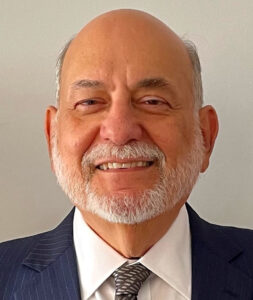 is the Chief Medical Officer for the Office of Radiological Health at the Food and Drug Administration’s (FDA) Center for Devices and Radiological Health. He earned a BA from Yale University and an MD from New York University, and completed a residency in diagnostic radiology and a fellowship in interventional radiology at New York University Medical Center. He is board certified in Diagnostic Radiology and Vascular and Interventional Radiology. Prior to joining FDA, he practiced interventional radiology for three decades at the National Institutes of Health and the National Naval Medical Center in Bethesda, Maryland.
is the Chief Medical Officer for the Office of Radiological Health at the Food and Drug Administration’s (FDA) Center for Devices and Radiological Health. He earned a BA from Yale University and an MD from New York University, and completed a residency in diagnostic radiology and a fellowship in interventional radiology at New York University Medical Center. He is board certified in Diagnostic Radiology and Vascular and Interventional Radiology. Prior to joining FDA, he practiced interventional radiology for three decades at the National Institutes of Health and the National Naval Medical Center in Bethesda, Maryland. 

 recently retired from the Nuclear Energy Institute as the Senior Director of Radiation Safety and Environmental Protection. His 45 y career spans a variety of positions in the areas of health physics; low-level radioactive waste management; and environmental protection across the sectors of nuclear energy, education, medical, industrial, research, and regulation. Mr. Andersen continues to practice as a certified health physicist and serves as an advisor to the Electric Power Research Institute on low-dose radiation research. He has a BA from the University of Maryland and completed graduate studies in radiology and radiation biology at Colorado State University.
recently retired from the Nuclear Energy Institute as the Senior Director of Radiation Safety and Environmental Protection. His 45 y career spans a variety of positions in the areas of health physics; low-level radioactive waste management; and environmental protection across the sectors of nuclear energy, education, medical, industrial, research, and regulation. Mr. Andersen continues to practice as a certified health physicist and serves as an advisor to the Electric Power Research Institute on low-dose radiation research. He has a BA from the University of Maryland and completed graduate studies in radiology and radiation biology at Colorado State University. News & Events
News & Events